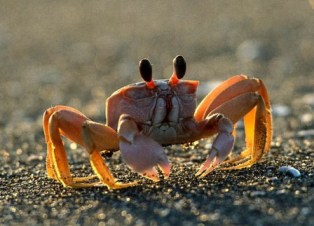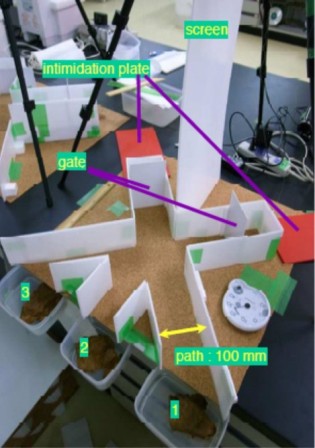
Long gone are the days of the MacBook Pro, it’s time for a crab computer! Or so are the hopes of a team of scientists from Japan and England, as they give new meaning to unconventional computing.
We must admit, the first time we’ve heard this story, we thought it was some sort of a hoax, but after further exploring this concept, it turns out it’s far from that.
Theories from the early 1980s that explored the prospects of building a computer out of billiard balls were the grounds for this study. The mechanical computer, proposed by Edward Fredkin and Tommaso Toffoli, was based on Newtonian dynamics and relied on the motion of billiard balls in an idealized, friction-free environment instead of electronic signals like a conventional computer.

So basically, by building this new computer model, Yukio-Pegio and colleagues at the Kobe University have decided to take it upon themselves to relinquish what Fredkin and Toffoli have chosen to leave off.
The basic concept for this new form of computing is a form of biomimicry (Link) , and it appears, after further examining crabs’ behavior, scientist found out that crabs exhibit what they call “ swarm behavior”.
Soldier crabs or Mictyris guinotae live in flat lagoons and form huge colonies of hundreds of thousands of individuals. “A single crab or a small group of crabs do not usually enter the water; however, a large swarm enters the water and crosses a lagoon without hesitation.” Nature never seizes to amaze, as this large group seems to be split into two behavioral sections; the crabs on the edge of the swarm exhibit aggressive leadership, keeping a solid edge to the group as they move forward (or, more likely, sideways) in unison. While those in the middle of the swarm and in the tail, passively follow their neighbors.
When a swarm of crabs is placed into a corridor with walls on each side, the crabs will closely follow the wall like a rolling billiard ball. This sort of behavior can be easily controlled, for example, by casting a shadow from above on the swarm to mimic the presence of crab-eating birds. The soldier crabs will move away from any shadowed areas for fear of being munched on. When two swarms of crabs—or “crab balls”—collide, they appear to merge and continue in a direction that is the sum of their respective velocities.
You can read the whole study here
Here’s a video for further explanation :
So, to sum up, these findings open up the possibility of creating an unconventional computing model that may lead to a new generation of ultra-efficient computers, instead of being merely energy consuming individuals!
![]()

Looking for a simple, elegant backup solution?
Genie Timeline 2012 is a new version of the number one continuous data protection program Timeline 2.1. It offers the first metro style user interface; enhanced performance, and added features. Like us on Facebook and Follow us on Twitter for the latest news.
>Follow @Genie9backup
![]()
